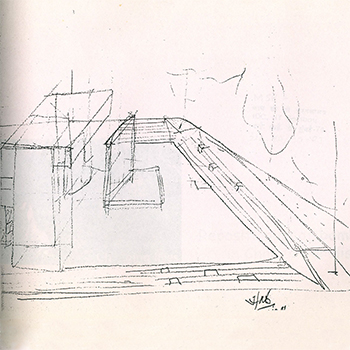This paper is part of a series of papers that explore the way designers use mental imagery to solve design problems. Given the task of designing a snack bar for a fashion institute located in an urban area, this paper will attempt to identify and compare the unique strategies that the architects developed to argue and take visuo-spatial decisions when blindfolded and prevented from using their usual thinking tool like sketching. New findings in the current experiments reveal the "goal setting" process that Suwa et al established for sketching. Therefore, the "S" invention of design issues and requirements talked about in this paper has its relevance to mental imagery as well, and we hope to show that our data disputes this emphasis that Suwa et al place on sketching.
